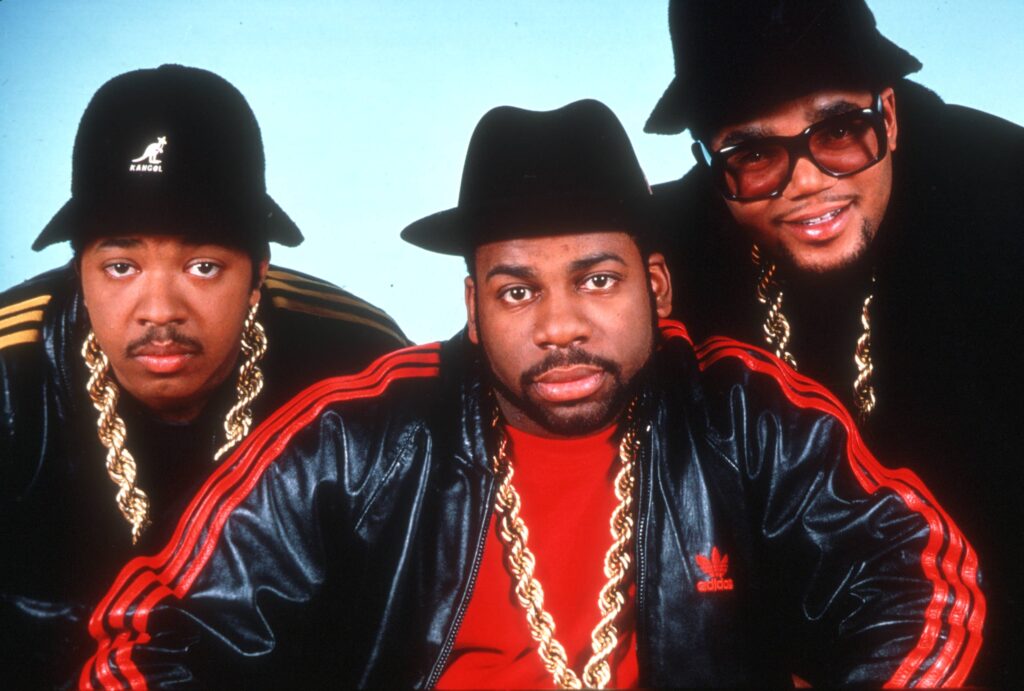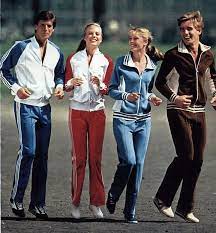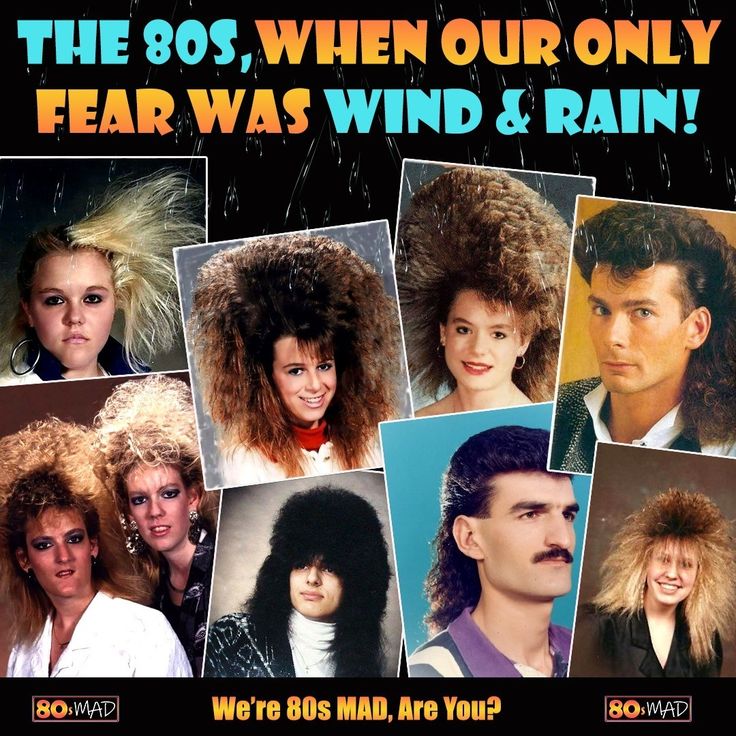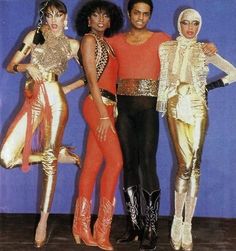The 80s hip-hop fashion scene was a kaleidoscope of boldness and self-expression. In this article, we embark on a journey through the iconic looks and hairstyles that characterized this influential era, highlighting the diversity and creativity that marked 80s hip-hop fashion on different occasions.
Casual Cool: Everyday Fashion
In the heartbeat of 80s hip-hop fashion, the casual coolness of everyday fashion emerged as a defining style. During this period, defiance of conventional norms emerged, and everyday attire transformed into a platform for individual expression.
Baggy Jeans and Oversized Tees

For Men: Baggy jeans, often adorned with graffiti or patches, took center stage. Paired with oversized graphic tees featuring iconic hip-hop logos or album covers, men embraced a laid-back yet statement-making style. The combination of loose-fitting jeans and tees created a relaxed silhouette, epitomizing the nonchalant spirit of the streets.
For Women:
Women enthusiastically adopted the oversized fashion trend, donning baggy jeans paired with loose-fitting, boldly patterned tees. The androgynous nature of fashion allowed women to break away from traditional feminine silhouettes, embracing a sense of empowerment through their clothing choices.
Sneaker Culture: A Staple in Casual Wear
For Men: In the realm of casual coolness, sneakers became more than footwear—they were symbols of identity. High-top basketball sneakers, often unlaced or paired with unique sock choices, were the go-to for men. Sneaker customization and collecting became a subculture within the larger hip-hop community, allowing individuals to showcase their personalities through their choice of kicks.
For Women: Women embraced sneaker culture with equal fervor. High-tops or stylish athletic sneakers complemented their casual attire. The playfulness extended to sock choices, with vibrant colors and patterns adding an extra layer of individuality. Sneakers weren’t just accessories; they were statements.
Formal Funk: Dressing for Special Events
As the beats of hip-hop echoed through the streets, the formal funk of dressing for special events brought a touch of extravagance to 80s hip-hop fashion. This was a realm where boldness met sophistication, creating an unforgettable blend.

Flashy Colors and Bold Patterns
For Men: Formal wear in the 80s was anything but understated for men. Flashy colors, bold patterns, and unconventional fabric choices were the order of the day. Whether it was a vibrant suit jacket or eye-catching accessories, the aim was to stand out in the crowd.
For Women: Women, too, embraced the vibrant palette of formal funk. From sequined dresses to bold patterned jumpsuits, the emphasis was on making a statement. Accessories, including oversized earrings and elaborate headpieces, added a touch of glamour to their ensemble.
How Accessories Stole the Spotlight
For Men: Accessories played a crucial role in elevating the formal funk for men. Chunky gold chains, oversized watches, and statement rings became essential elements. These accessories weren’t just embellishments; they were symbols of status and style.
For Women: Women in the 80s adorned themselves with accessories that stole the spotlight. Bold, chunky jewelry, including large hoop earrings and layered necklaces, became synonymous with the era. The juxtaposition of extravagant accessories with formal attire created a captivating visual narrative.
Stay tuned as we unravel more layers of 80s hip-hop fashion, exploring the intersection of style and culture on different occasions. The journey continues with a spotlight on sporty spice, activewear in the 80s, and the evolving silhouettes that defined this iconic era.
Sporty Spice: Activewear in the 80s
The infusion of sportswear into everyday fashion marked a dynamic shift in the 80s hip-hop scene. Activewear became a symbol of energy, movement, and a lifestyle that celebrated both athleticism and style.

Tracksuits and Shell Suits: A Sporty Fashion Statement
For Men: Tracksuits took center stage, featuring bold color combinations and contrasting stripes down the sides. The shell suit, characterized by its shiny, synthetic fabric, became a popular choice, creating a distinctive sporty aesthetic for men. The comfort and versatility of these outfits made them a staple in hip-hop wardrobes.
For Women: Women embraced tracksuits with a feminine twist. Coordinating tracksuit sets in vibrant colors adorned with intricate patterns or bold graphics became a fashion statement. The sporty yet chic look enabled women to move seamlessly from the gym to the streets.
The Rise of Athletic Sneakers in Street Fashion
For Men: Athletic sneakers evolved beyond the gym, becoming a fundamental element of street fashion for men. Brands like Nike and Adidas took center stage, introducing innovative designs and technologies. Sneakers with air cushions and distinctive silhouettes became iconic symbols of urban style.
For Women: Women’s sneaker choices mirrored the bold trends of their male counterparts. High-performance athletic sneakers with vibrant color schemes and unique designs became a popular accessory. The fusion of comfort and style made athletic sneakers an integral part of 80s hip-hop fashion for women.
Hairdos and Head-Turners
In the 80s, hairstyles were not just a part of the look—they were a cultural statement. The hairdos of this era were bold, and expressive, and often became iconic symbols of personal style.

High-Top Fades: The Signature Men’s Hairstyle
For Men: The high-top fade, characterized by short sides and a dramatically longer top, became the quintessential men’s hairstyle. Often accompanied by intricate designs or patterns shaved into the sides, this bold look represented a fusion of African and urban American influences.
For Women: While women embraced various hairstyles, the high-top fade influenced many, with some adding their unique twists. From asymmetrical cuts to incorporating vibrant colors, women in the 80s experimented with bold expressions of individuality through their hair.
Wild Curls and Bantu Knots: Women’s Hair Trends
For Women: Wild curls and Bantu knots were prominent hairstyles for women. Natural curls were celebrated, and women adorned their hair with colorful accessories like scrunchies and headbands. Bantu knots, characterized by small, coiled sections of hair, became a symbol of cultural pride and fashion-forward thinking.
Dance Floor Glam: Fashion in Hip-Hop Culture
The dance floor was not just a place for movement; it was a runway for self-expression. Fashion in hip-hop culture transcended clothing—it became a performance, a visual representation of the rhythm and beats that moved the crowd.

Glitter and Gold: Shimmering Outfits on Dance Floors
For Men and Women: Dance floors in the 80s witnessed a glitter and gold revolution. Sequined jackets, metallic pants, and shimmering dresses transformed the night into a dazzling spectacle. The interplay of light and texture created an electric atmosphere, where fashion became an integral part of the dance experience.
Influential Dance Moves and Corresponding Styles
For Men and Women: Dance moves like the moonwalk and the electric slide not only shaped the rhythm of the night but also influenced fashion choices. Clothing that allowed for fluid movements, such as harem pants and loose-fitting tops, became popular. The synergy between dance and fashion was a testament to the interconnectedness of hip-hop culture.
Celebrity Style Icons
The 80s were marked by the rise of influential style icons within the hip-hop community. These trailblazers not only shaped musical landscapes but also became trendsetters in the world of fashion.
Run DMC’s Influence on Street Fashion
For Men: Run DMC, with their trademark fedoras and iconic Adidas tracksuits, became synonymous with street fashion for men. Their bold and unapologetic style inspired a generation, influencing not only clothing choices but also the perception of what street fashion could be.
For Women: While the influence of Run DMC was primarily on men’s fashion, women embraced elements of their style. Oversized jackets, fedoras, and the integration of athletic wear into everyday outfits became key features inspired by this influential hip-hop group.
Queen Latifah: A Fashion Trailblazer for Women
For Women: Queen Latifah, a pioneer in both music and fashion, redefined femininity within the hip-hop scene. Her style was a fusion of strength and elegance, often featuring bold patterns, oversized blazers, and statement accessories. Queen Latifah’s impact on women’s fashion in the 80s transcended the stage, empowering women to embrace their individuality through clothing.
Stay tuned as we unravel more layers of 80s hip-hop fashion, exploring the impactful role of color in “In Living Color: Palette of 80s Fashion” and the transformative power of DIY fashion in “DIY Fashion: Personalizing the Trend.” The journey continues to delve into the roots of cultural influences in “Cultural Influences: Afrocentric Styles” and the evolution of silhouettes in “Evolving Silhouettes: Fashion Adaptations.” The 80s hip-hop fashion legacy is a tapestry of diversity, individuality, and bold self-expression that continues to inspire generations.
In Living Color: Palette of 80s Fashion
The 80s were a riot of colors, a celebration of vibrant hues that defined the palette of fashion in this era. The choices of colors were more than just aesthetic; they were statements of mood, attitude, and cultural expression.
Neon Madness: Embracing Bright Hues
For Men and Women: Neon colors were at the forefront of 80s fashion. From electric greens to hot pinks, clothing choices embraced the neon madness. Whether it was a bold tracksuit or an attention-grabbing accessory, neon hues were an essential component of the 80s hip-hop fashion landscape.
How Color Choices Reflected Moods and Attitudes
For Men and Women: The color choices in 80s fashion went beyond mere aesthetics; they were a language of expression. Vibrant reds symbolized energy and passion, while cool blues conveyed a sense of calm. Colorful patterns and prints further enhanced the visual language of individuality within the hip-hop community.
DIY Fashion: Personalizing the Trend
The spirit of individuality and self-expression found its zenith in the trend of DIY fashion during the 80s. Personalizing clothing through creative means became a form of art and rebellion.
Customization with Patches and Graffiti
For Men and Women: DIY fashion allowed individuals to take control of their style, and customization with patches and graffiti was a widespread trend. Denim jackets adorned with patches of favorite bands or graffiti-inspired designs became emblematic of the do-it-yourself ethos. The streets became a canvas for personal expression.
Transformative Power of Accessories
For Men and Women: Accessories played a pivotal role in personalizing the trend. Chains, pins, and personalized jewelry became more than adornments—they were statements of identity. The transformative power of accessories allowed individuals to turn everyday clothing into a unique and personalized fashion statement.
Cultural Influences: Afrocentric Styles
The 80s witnessed a resurgence of Afrocentric styles, celebrating the richness of African and African-American heritage. Clothing choices became a canvas for cultural pride and expression.
Embracing Kente Prints and Ankara Fabrics
For Men and Women: Kente prints and Ankara fabrics emerged as powerful symbols of Afrocentric styles. Clothing adorned with these vibrant and intricate patterns became a visual celebration of African culture. The embrace of these fabrics was a statement of connection to roots and heritage.
How Afrocentricity Inspired Fashion Choices
For Men and Women: Afrocentric styles inspired a shift towards earthy tones, tribal patterns, and natural textures. Men and women embraced clothing that not only reflected the aesthetics of African heritage but also conveyed a sense of pride and connection to cultural roots. Afrocentricity became a powerful influence in shaping fashion choices during the 80s.
Evolving Silhouettes: Fashion Adaptations
The 80s witnessed a shift away from traditional silhouettes, with fashion embracing oversized, bold, and unconventional shapes. Evolving silhouettes became a canvas for self-expression.
Shoulder Pads and Oversized Blazers
For Women: Women’s fashion in the 80s saw a resurgence of power dressing, marked by the prominence of shoulder pads and oversized blazers. The strong, structured silhouette became a symbol of empowerment, and women confidently embraced this bold and authoritative look.
Influence of Runway Fashion on Street Styles
For Men and Women: The influence of runway fashion transcended the elite and trickled down to the streets. Evolving silhouettes in 80s hip-hop fashion were not confined to gender norms. Men and women adopted and adapted runway trends, making bold fashion statements that blurred traditional lines.
The Legacy of 80s Hip-Hop Fashion
The 80s hip-hop fashion legacy is not confined to a bygone era; it continues to reverberate through contemporary fashion trends. This legacy is a testament to the enduring impact of a cultural movement that shaped the way we perceive and express ourselves through clothing.

Contemporary Resurgence of 80s Fashion Trends
For Men and Women: The legacy of 80s hip-hop fashion lives on in the contemporary fashion landscape. The resurgence of iconic trends, such as oversized silhouettes, neon colors, and bold accessories, demonstrates the timeless appeal of this influential era. The streets are once again a stage for the revival of 80s hip-hop fashion.
The Lasting Impact on Modern Streetwear
For Men and Women: Modern streetwear owes much to the groundbreaking styles of the 80s. The fusion of sportswear, casual coolness, and a spirit of rebellion laid the foundation for the streetwear culture we see today. The lasting impact of 80s hip-hop fashion is evident in the way people continue to embrace and reinvent these iconic trends.
Nostalgia in Fashion Photography
The art of fashion photography in the 80s played a crucial role in capturing the essence of the era’s style. Nostalgia in fashion photography today often revisits the iconic visuals that defined 80s hip-hop fashion.
Capturing the Essence of 80s Style
For Men and Women: Fashion photographers in the 80s immortalized the spirit of the times through their lens. The dynamic poses, vibrant colors, and unconventional compositions captured the essence of 80s hip-hop style. Today, these photographs serve as portals to a bygone era, invoking nostalgia and admiration for the iconic fashion of the time.
Photography Techniques That Defined the Era
For Men and Women: The 80s witnessed a shift in photography techniques that contributed to the visual language of hip-hop fashion. Bold lighting, unconventional angles, and the use of vibrant backdrops became trademarks of fashion photography during this era. These techniques not only showcased clothing but also conveyed the attitude and energy of the hip-hop culture.
Fashioning Unity: Social and Cultural Impact
Beyond being a realm of self-expression, 80s hip-hop fashion played a pivotal role in shaping social and cultural narratives. Clothing became a tool for breaking stereotypes and fostering unity within diverse communities.
Breaking Stereotypes Through Clothing
For Men and Women: The clothing choices of the 80s hip-hop community were a rebellion against societal stereotypes. Men and women embraced styles that defied traditional norms, challenging preconceived notions of how individuals should dress based on gender, race, or socio-economic background. The fashioning of unity became a powerful form of resistance.
How 80s Hip-Hop Fashion Contributed to Social Movements
For Men and Women: The impact of 80s hip-hop fashion extended beyond aesthetics; it contributed to social movements. Clothing became a visible expression of solidarity with marginalized communities. The fashion choices made statements about identity, equality, and the desire for change, creating a powerful intersection of style and activism.
80s Hip-Hop Fashion: Future Trends
As we explore the vivid tapestry of 80s hip-hop fashion, the journey doesn’t end in nostalgia. The influence of this era continues to shape the future of fashion, with a revival of vintage pieces and anticipation for the return of iconic styles.
Revival of Vintage Pieces in Modern Fashion
For Men and Women: Vintage pieces from the 80s are experiencing a renaissance in modern fashion. From classic tracksuits to bold accessories, the revival of vintage pieces allows individuals to connect with the authenticity and boldness of the 80s hip-hop style. The streets are once again witnessing the resurgence of iconic fashion statements.
Anticipating the Return of Iconic Styles
For Men and Women: Fashion enthusiasts eagerly anticipate the return of iconic styles from the 80s. The cyclical nature of fashion suggests that elements like oversized silhouettes, neon colors, and bold accessories will find their way back into mainstream trends. The anticipation for the return of these iconic styles reflects the enduring impact of 80s hip-hop fashion on the ever-evolving landscape of style.
Street Style Revolution
Unraveling the Roots of Street Fashion
In the vibrant tapestry of 80s hip-hop fashion, the Street Style Revolution emerges as a cornerstone, redefining the way individuals express themselves through clothing. Unraveling the roots of street fashion unveils a rich cultural history that not only transformed wardrobes but also became a visual language for an entire generation.
1. Fusion of Cultures: Street fashion in the 80s was a melting pot of diverse influences, blending elements from African, Caribbean, and Latin American cultures. This fusion created a unique and eclectic style that resonated with the multicultural communities of urban centers.
2. DIY Aesthetic: At the core of the Street Style Revolution was the DIY (Do It Yourself) aesthetic. Street fashion enthusiasts embraced the freedom to customize their attire, using patches, graffiti, and unconventional materials. This spirit of self-expression fueled a sense of individuality within the hip-hop community.
3. Anti-Establishment Expression: The roots of street fashion in the 80s were embedded in an anti-establishment ethos. The youth, particularly in marginalized communities, used clothing as a form of rebellion, challenging societal norms and expressing dissent through their unique style.
4. Influence of Music and Art: The beats of hip-hop music and the visual language of street art played a pivotal role in shaping fashion. Lyrics and album covers became influential style guides, with artists like Run DMC not only setting musical trends but also dictating sartorial choices.
Defining Features of Urban Hip-Hop Styles
The urban landscape of the 80s witnessed an extraordinary metamorphosis in fashion, particularly within the hip-hop community. The defining features of urban hip-hop styles were not just about clothes; they were a powerful assertion of identity and a reflection of the socio-cultural milieu.
1. Baggy Silhouettes: Urban hip-hop styles celebrated the comfort and freedom of movement. Baggy jeans, oversized hoodies, and loose-fitting attire became synonymous with the rebellion against the tailored and restrictive fashion of previous decades.
2. Sneaker Culture: A defining feature of urban hip-hop fashion was the emergence of sneaker culture. Iconic brands and signature models became status symbols, and the way sneakers were worn and customized reflected an individual’s affiliation with a particular subculture.
3. Bold Logos and Graphics: Clothing in the Street Style Revolution was a canvas for bold logos and graphics. Brands like Adidas and Nike gained prominence, and their logos adorned everything from tracksuits to accessories, becoming emblematic of the hip-hop lifestyle.
4. Headwear Statements: Hats, especially snapbacks and bucket hats, became essential accessories. The way these headwear pieces were worn, tilted at specific angles, or paired with specific hairstyles, conveyed a deeper narrative of belonging and personal style.
The Street Style Revolution of the 80s was more than a fashion movement; it was a cultural upheaval, a visual rebellion against the norms of the time. Unraveling its roots reveals a dynamic fusion of cultures and a celebration of individuality that continues to influence and inspire contemporary street fashion. As we delve into the different looks and hairstyles of men and women in 80s hip-hop fashion, the legacy of the Street Style Revolution remains a powerful undercurrent, reminding us of the enduring impact of a cultural movement woven into the fabric of fashion history.
FAQs
- What are the key elements of the 80s hip-hop street style?
- The quintessential elements include baggy jeans, oversized tees, and iconic sneakers, creating a casual yet bold look.
- Did hairstyles play a significant role in 80s hip-hop fashion?
- Absolutely! High-top fades for men and wild curls or Bantu knots for women were distinctive and celebrated styles.
- How did hip-hop culture influence formal wear in the 80s?
- Formal wear embraced flashy colors, bold patterns, and extravagant accessories, reflecting the cultural vibrancy of the era.
- Who were the style icons that defined 80s hip-hop fashion?
- Run DMC and Queen Latifah were influential figures, shaping the fashion landscape with their unique styles.
- What role did DIY fashion play in 80s hip-hop culture?
- DIY fashion, through patches and graffiti, allowed individuals to personalize their outfits, fostering a sense of uniqueness.
- How has 80s hip-hop fashion influenced contemporary styles?
- The legacy lives on, with a resurgence of vintage pieces and a continuous impact on modern streetwear.
Conclusion
As we conclude this exploration of 80s hip-hop fashion, it’s evident that this era left an indelible mark on the world of style and self-expression. The fusion of street culture, music, and fashion during the 80s continues to inspire and influence trends, ensuring its lasting legacy in the ever-evolving world of fashion.
